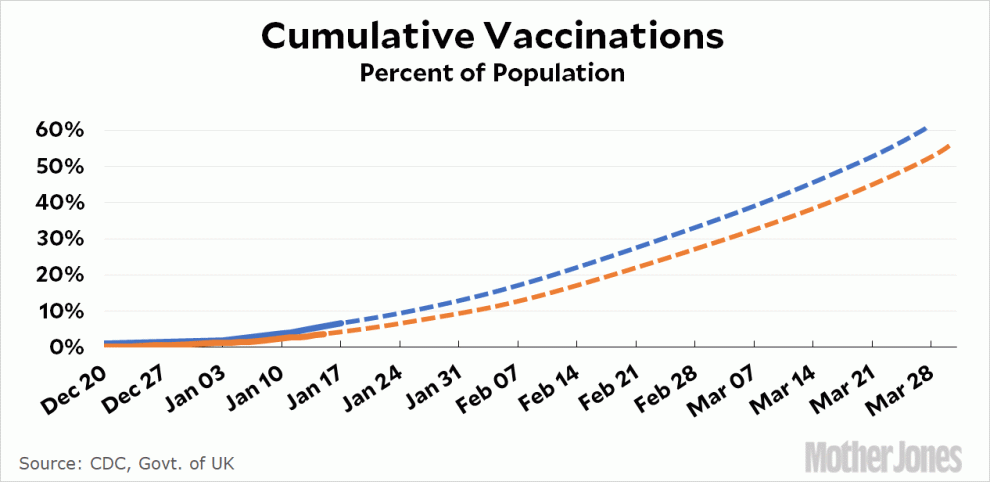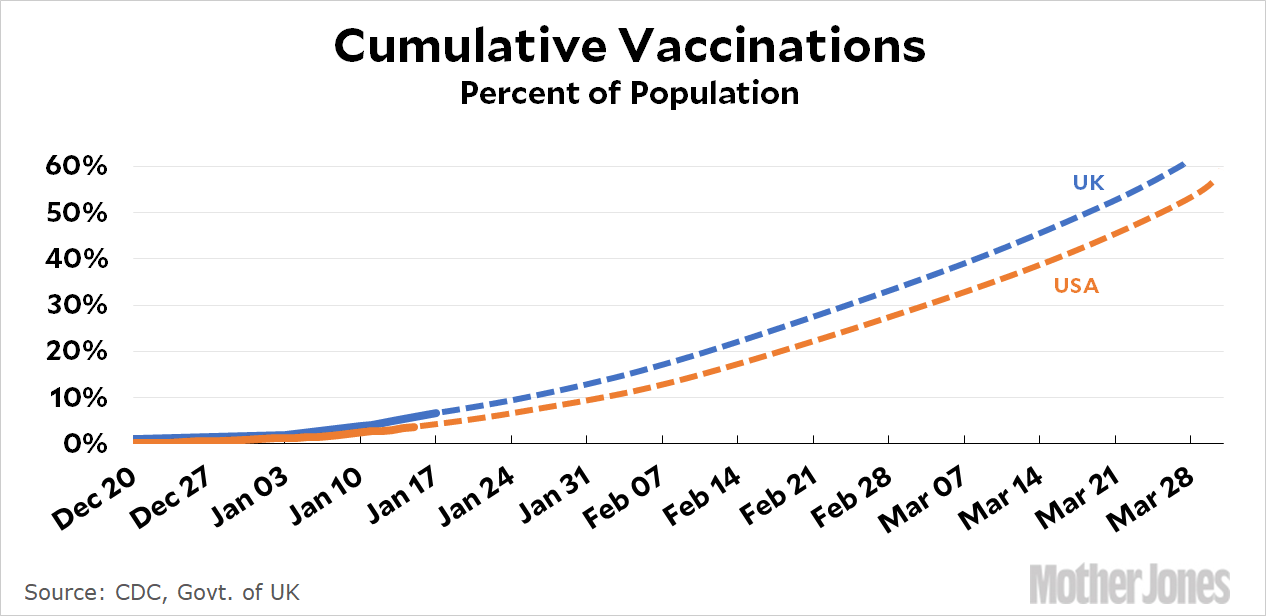
Here’s an odd thing. I was looking at the numbers for vaccinations and it turns out that on a log scale they’re rising on a straight line. What this means in semi-English is that the number of vaccinations per day is rising exponentially in both the UK and the United States. Here’s what this looks like assuming only a very small exponent:

If you plot the log version of this, it suggests 100 percent coverage by the end of February. However, I don’t have the courage of my convictions and assumed a much more conservative growth rate. Even so, if we keep this up we’ll have half the country or more vaccinated by the end of March—including nearly 100 percent of the most vulnerable populations.
This does not even remotely match anything I’ve read about vaccination rates, which makes me hesitant to even post this. But what mistake am I making? The vaccine rollout has been getting better as time goes on, and it’s not unreasonable to assume that this will continue. At some point, of course, we’ll hit a ceiling due to availability of doses, but it’s not clear when that will happen.
In any case, is our long-term problem really lousy distribution or is it supply constraints? What’s going on here?















